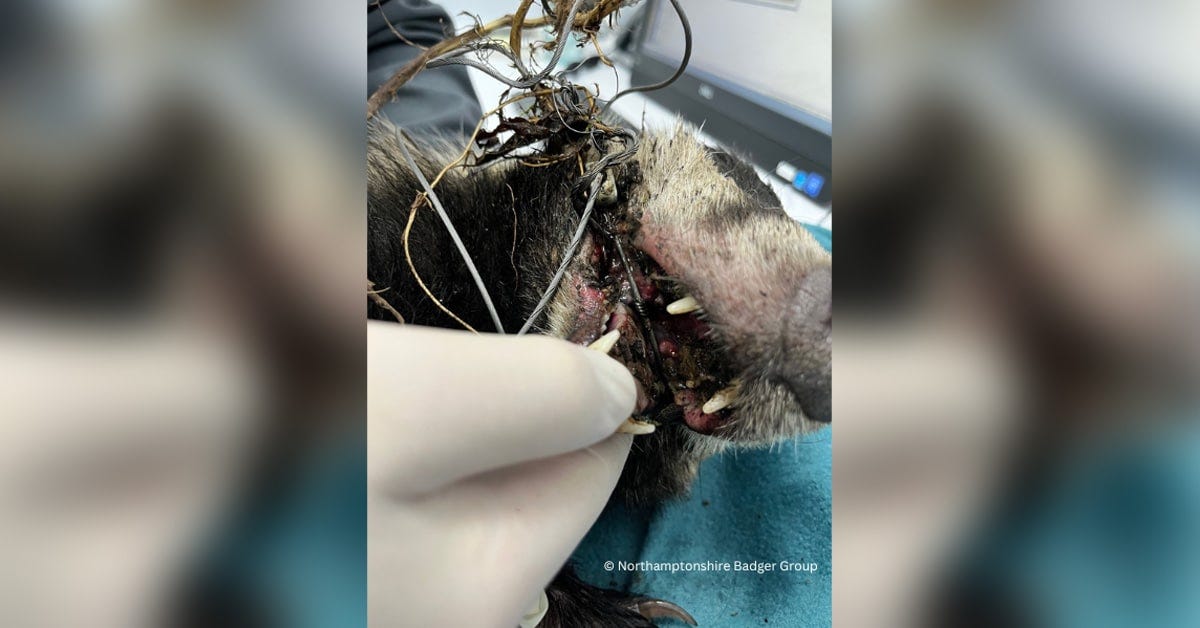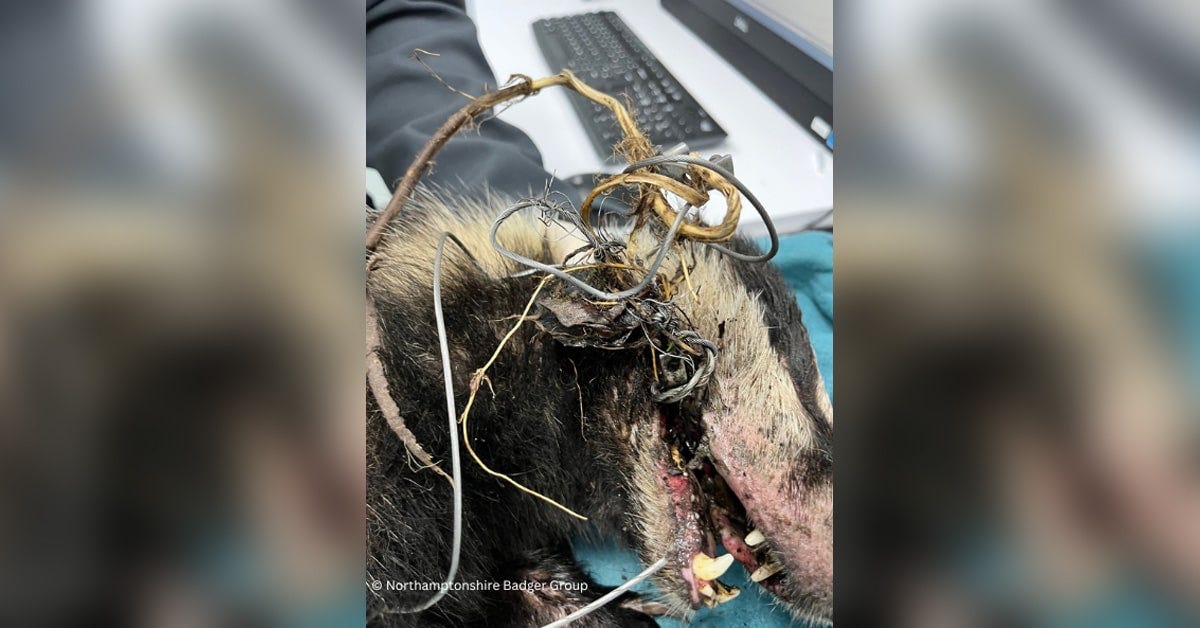Stark images of a snared badger highlight the need to ban snares now
A badger was found caught in a snare on the outskirts of a town in Northamptonshire. And images of the creature reveal just how cruel the devices are.
On 3 February, Northamptonshire Badger Group said on Facebook that it had spent five hours searching for an injured badger “through fields, brambles and thick hedges”. The badger group told Protect the Wild that a member of the public had initially found the badger on Monday 1 February and attempted to help, but he struggled and ran away. She then alerted the police, who said they looked for him for several hours the following day. The police then alerted Northamptonshire Badger Group on Wednesday, with the group itself then searching for the badger.
Eventually, the group said it found him around lunchtime on the Saturday. A Facebook post later that day said:
“We got the snared badger and rushed [him] straight to the vet, where sadly he was put to sleep. … This badger suffered for days, beyond comprehension. The tight snare was around [his] head and mouth.”
And it stated that the case was now under investigation by police. The group revealed slightly more information in a later post by the Badger Trust, saying the snare was “wired up to lock” and was likely “an illegally set snare”.
Northamptonshire Badger Group told Protect the Wild that the snare prevented the badger from closing his mouth. As a result, he’d likely not eaten or drank for at least four days.

Vet examines badger's mouth, with permission from Northamptonshire Bagder Group.
Not just the shooting industry
The badger was found in fields on the edge of the town of Great Houghton, near Glebe Lane. In a public statement on 9 February, Northamptonshire Police Rural Crime Officer Chloe Gillies said the team believed the snare “may have been [set] in the woodland area between the Brackmills Industrial Estate and Great Houghton”.
Snares are commonly used by the shooting industry on estates to ‘protect’ birds that are later shot for recreation. They are nominally intended to catch foxes. However, as Protect the Wild previously reported, experts estimate up to 69% of animals that legally-set snares catch are not the intended target species. As a result, Protect the Wild asked Northamptonshire Badger Group if it believed the snare was linked to a local shooting estate. However, the group said it wasn’t aware of any estates nearby. Moreover, there was a nearby country park commonly used by members of the public with dogs.
It did point out, though, that there are farms nearby. The photos of the injured badger show a snare that appeared to be a professionally manufactured rather than home-made device. As a result, the group speculated the snare was set on a local farm.

Snare wrapped around badger's mouth, with permission from Northamptonshire Bagder Group.
Ban snares now
The case of the Great Houghton badger is a reminder that snares are cruel devices, regardless of who uses them or where they are set. While much of the discourse against snares focuses on their use by gamekeepers, it’s clear that professionally manufactured snares are deployed by other landowners and their agents who are seeking to persecute wildlife, even close to urban centres.
As this case also illustrates, though, snares not only catch unintended targets, they wreak incredible cruelty on whomever is caught by them. Protect the Wild believes a ban is the quickest route towards ending a majority of these cases – if the UK government had any interest in doing so. While Wales is already set to introduce a snare ban, and Scotland appears to be heading in a similar direction, Westminster is barely able to discuss the matter in a serious manner. However, the movement to ban snares across the UK continues building through groups such as the National Anti-Snaring Campaign and Hunt Investigation Team.
If you have any information that could relate to the snared badger, please contact 101 using incident number 23000081935.
Visit Northamptonshire Badger Group’s website to learn how to volunteer with or donate to them.
Featured image with permission via Northamptonshire Badger Group.



